-
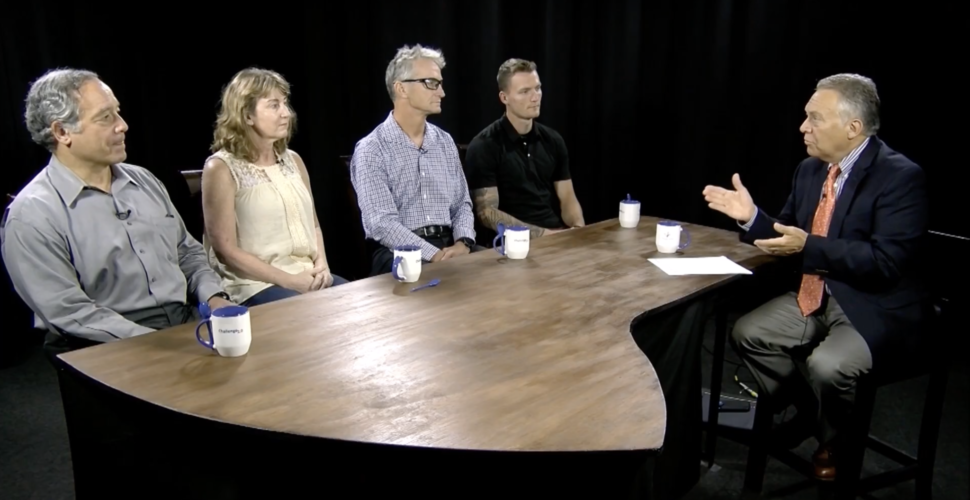
No Mountain Too High
No Mountain Too High-Overcoming an addiction can seem like climbing a mountain. An impossibly high mountain. And there are many who find themselves on that trail. A federal study last year concluded that 32 million Americans aged twelve or older suffer from a substance abuse disorder. But therapists emphasize it’s just as important to focus on recovery rates…that many can and do reach ‘the summit’ of recovery. That’s the focus of this episode of Challenge 2.0-some remarkable stories realized through a program called Recovery Beyond.
Air Date: October 19th, 2019 at 7:30 AM on MeTV, carried through cable providers as well as DirectTV and Dish Network.
Host: Jeff Renner
Panelists: Mark Ursino, Dawn Brown, Shadow Behrends, Scott Sowle
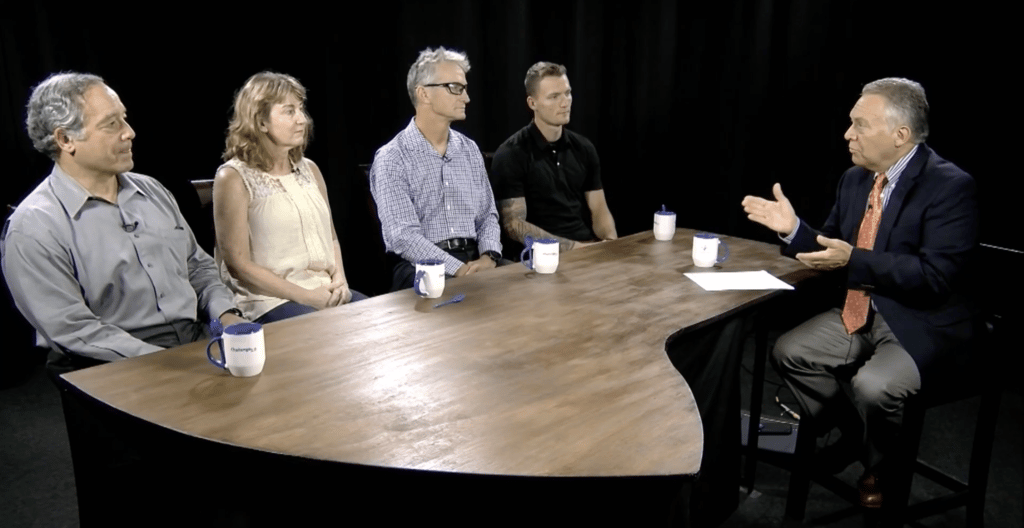
Challenge 2.0 Overview
The Treacy Levine Center, in partnership with Weigle Broadcasting and Seattle Community Cable TV, is announcing the Challenge 2.0. With host Jeff Renner, panelists from many faith and wisdom traditions will gather to take on the challenges that face us today. Panelists will bring their wisdom to the table to help us envision the future we all desire, and what we can do to get there. Panelists will bring a capacity to listen, learn and strive toward love for all the human family.
About the Treacy Levine Center
The center’s roots lie in the pioneering television interfaith dialogue program, “Challenge,” begun in 1960 in response to widespread fear among Americans concerning the prospect of a Catholic president. As an outgrowth of that dialogue, participants Rabbi Raphael Levine and Father William Treacy founded the Treacy Levine Center in 1966, under its original name, Camp Brotherhood. Now that the camp has sold to Camp Korey, the Treacy Levine Center is refocusing its mission to cross the bridge to our common humanity through media, events and encouraging personal action.
0 -
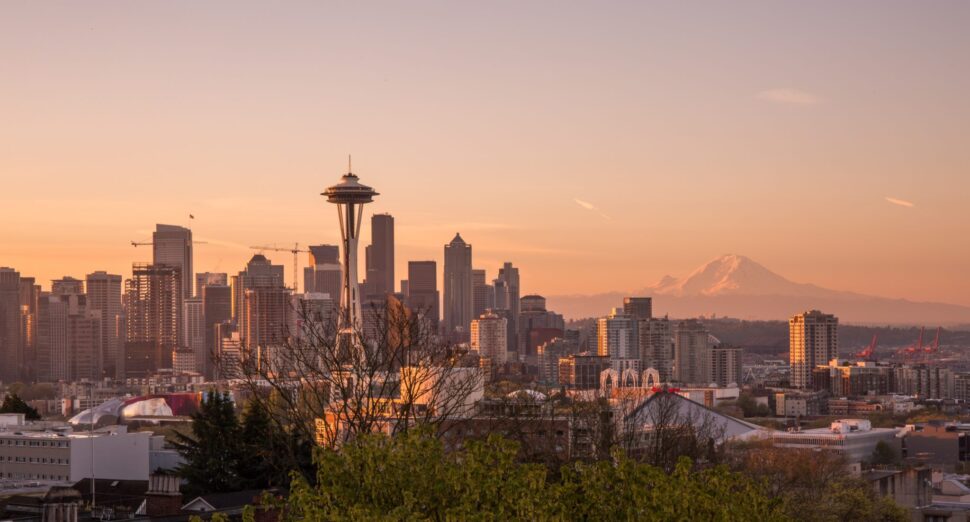
Spotlight with Gary Shipe
Recovery Beyond Featured In

BY: Gary Shipe
Gina Haines and Nate Lanting from Recovery Beyond join us today to talk about a new paradigm for addiction recovery. Recovery Beyond works with current addiction treatment programs to provide the two additional, critical success factors for long-term sobriety: a new, enduring lifestyle of healthy behaviors and activities; and a long-term community filled with positive relationships and support. From fitness training all the way up to climbing the summit of Mt. Rainier, Recovery Beyond has new ways to reach stable sobriety. Learn more at www.recoverybeyondbp.org
-
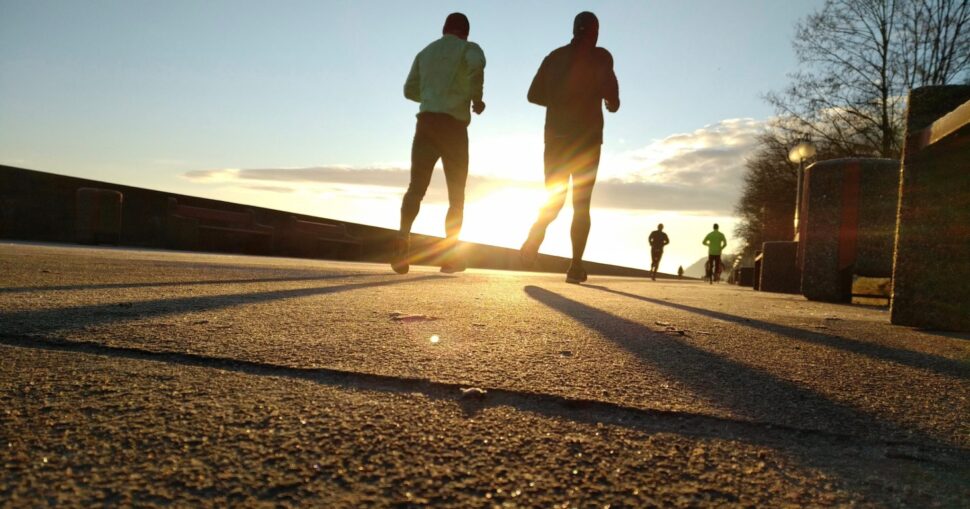
Specified Complexity Is All Around Us
Recovery Beyond Featured In

BY: Sarah Chaffee
If you fail to plan, you plan to fail. That’s something a CPA told me the other night.
Achievement is not random. It requires intelligent design. A key idea in the theory of ID is specification, or matching a pattern. Specified, complex information is a hallmark of intelligent activity. Humans can envision an end goal. Chance and determinism fail to produce specified complexity, but the mind can create it. ID theorists including William Dembski have given mathematical rigor to this idea. But it’s all around us in everyday life.
I find the power of intention hard to overstate. Bear with me as I examine a few illustrations.
Intention in Finances
Have you heard of Dave Ramsey? He is the get-out-of-debt guru, with seven “baby steps” to fix your debt situation, from creating an emergency fund to putting away retirement savings. People across the country follow his methods and credit him with getting them onto solid financial ground. There’s a plan, and there’s execution.
Some counselors offer advice that goes more heavily into the details. The FIRE (Financial Independence, Retire Early) movement began recently but is growing. One group, ChooseFI, lists its own “Pillars of FI,” from low-cost index fund investing to tax optimization and hacking student debt. Randomness and determinism are the enemies when it comes to financial success — planning and information are one’s greatest assets.
Intention in Health
Here are a few facts for you. The American Heart Association recommends 150 minutes of moderate intensity exercise per week, just to keep your heart working well. From various studies, it seems that the Mediterranean diet (yay for wild caught fish!) may be one of the best ways to eat. Clearly, intelligent design, which means planning and execution, not going with the flow, is key to health and fitness.
How about athletics? Running, in general, seems hard at first, but people can work up to a half marathon in a few weeks by starting quite small and working consistently according to a plan. I love programs like Recovery Beyond Paradigm or Team Mission here in the Puget Sound — RBP helps those dealing with addiction to get and stay clean through hiking and mountaineering (spoiler: they climb Rainier or Adams), and Team Mission does the same — with running.
Intention in Learning
During college, my foreign language was Mandarin Chinese. I enjoyed spending two summers in China, practicing and improving my language skills and volunteering with an NGO. But there are people who go much further. For them, language learning becomes a passion. Polyglots learn multiple languages. I heard an interview with one polyglot who learns a new language every two years. Polyglots are very intentional in their process, not relying on the guidance of a teacher, but fine-tuning their methods for learning grammar, pronunciation, and more.
How about the music? The other day I found myself at a concert where a junior in college played four stunning pieces on the harp, all from memory. Afterward, his teacher mentioned to me that it was easy to teach him because he could learn almost any piece of music she put in front of him. The intricacies of learning the music and then memorizing it are just baffling. It doesn’t come by following the flow where it leads you. Again — musicians and language learners eschew chance in favor of discipline and specific goals.
Planning and follow-through bring excitement and hope. Some part of us knows that mind must triumph over matter and circumstance if complex order is to prevail. Neo-Darwinian evolution, which depends on chance and determinism, does not fit with this perspective, nor with our experiences.
Photo credit: Tomasz Woźniak via Unsplash.
-
Public Affairs – Recovery Beyond
Recovery Beyond Featured On

By Luciana Bosio –
You’ve heard the phrase “When you hit rock bottom, you can only go up…” The question is how high… How about 14,411 ft? That number may seem random, but it’s not… 14,411 ft is the elevation on Mt. Rainiers summit. And yes, Mt. Rainiers summit is helping people recover from addiction and homelessness… How? Well, that’s what this show is about. Recovery Beyond Paradigm addresses the problems of addiction recovery and homelessness in unconventional ways, like summiting Mt. Rainier… To Talk about Recovery Beyond Paradigm and their Climbing Out of Homelessness program, we’ve invited Gina Haines, Executive Director of Recovery Beyond Paradigm, and Program Manager Nate Lanting. Listen to our talk here…
-

KIRO Radio, The Ron and Don Show Features Climbing Out Of Homelessness
Recovery Beyond Featured On

On the June 12, 2017 broadcast of The Ron and Don Show on KIRO Radio in Seattle, the Climbing Out program was highlighted. You can listen to the broadcast below. Forward to 19:40 for the story on our amazing program.

-
How climbing Mt Rainier is changing the lives of formerly homeless addicts
Recovery Beyond Featured In

Dawn Brown used to be addicted to crack.
“Addiction has been a problem for me for years. In the end I was all by myself, driving around in a car, smoking crack and drinking alcohol, 24/7. I just could not seem to get anything on track. I mean, I had been a registered nurse at one point.”
Eric Uebelacaer was in a similar situation.
“I was addicted crack cocaine for 25 years, off and on.”
These stories are not unusual at Seattle’s Union Gospel Mission and the Tacoma Rescue Mission, where homeless addicts might find themselves after hitting rock bottom.
The Missions give homeless people a permanent home for a year. They feed them, clothe them and put them in an addiction recovery program with counseling. In 2011, Mike Johnson, executive director of the Tacoma Rescue Mission, and an ex-ranger from Fort Lewis, added a new layer to the recovery program when he created Climbing out of a Homelessness. Johnson leads participants through a ten month training program that ends with climbing Mount Rainier.
“The first year of participants they said, you know, frankly, getting off heroine was harder,” says Johnson. “‘Thank you for giving me a neat experience.’ But what they really got out of it was the team. So from that point on we really focused on the team building side of things, the relationship side of things. We’ve now done five, almost six climbs. It’s changed a lot of lives, mine included.”
Johnson, who had never climbed Rainier before this program, says the climbers tend to stay off drugs, off of alcohol, and become functioning members of society again.
“It works because it’s dealing with the thing that’s actually the problem. The single biggest variable that’s correlated with adult homelessness is childhood maltreatment, childhood abuse, abandonment, trauma and neglect. We increasingly are aware that addiction’s root is really loneliness and inadequate connections with each other. And so it’s not merely that someone needs to learn to live without drugs or alcohol in their life. They need to learn how to live with people in their life. So the great thing about this climbing program is that while people are working on their sobriety, through a good and well established program, we’re also making available to them the chance to see a licensed mental health counselor to deal with their childhood trauma. Then the climbing program creates that new connection. It’s like, ohh, this is how people are meant to live with each other, to encourage each other. I need these guys as much as they need me. The truth is these are the most inspiring people I’ve ever met and I wouldn’t be climbing if it wasn’t for them.”
Anyone is welcome to join the climbing team, but in order to attempt Rainier, participants must first summit Mount Hood, which Uebelacaer did just two weeks ago. This is a huge accomplishment, considering he arrived at the Tacoma Rescue Mission in December in terrible shape.
“My addiction at that point had been at the worst stage it had ever been at. I’d been on a two year run, using every day, all day. When I got to the Mission I was smoking a pack of cigarettes a day, I was sick, no sense of belonging, no friends. It was a real dark place.”
Uebelacaer has a fresh tattoo of a mountain on his arm. Since he started training he hasn’t smoked a single cigarette, at 54 years old he says he’s in the best shape of his life and he’s getting ready to go back to school to earn a degree in exercise science and nutrition.
“Being a part of climb team is what’s taken me to the next level of my recovery,” Uebelacaer says. “It really has. The friendships, the sense of belonging, the community of it. You don’t have to do life alone. You really can’t do it alone, you’re not supposed to do it alone, that’s not the way it was ever designed. It’s been huge for me.
Homeless people often feel isolated from the rest of society, but the climbing program helps bridge that gap.
“Half the team is folks from the recovery program, the other half are people from the community,” Johnson explains. “We’re mixing them up in the van, we’re mixing them up on the trail, we’re mixing them up in the tents, frankly, up at Camp Muir. So in one tent you’ve got somebody who went to prison when he was 18 for armed robbery and has struggled with alcohol for the next dozen years and another guy who is a VP of accounts at Cisco Systems. They’re discovering that they’re climbing the same mountain, they want and need the same things, which includes each other. That’s what overcomes that sense of isolation.”
As for Dawn Brown, she was on the climbing team in 2013. She now works as a flight attendant and has connected with a group of women hikers and has gotten out on several trails this summer.
Click here for more information on how to join the Climbing out of a Homelessness team, or to make a donation.
-
On Mountain Climbing, Homelessness, Addiction and Finding Our True Selves
Recovery Beyond Featured In


THE PAINTING “WANDERER ABOVE THE SEA OF FOG” BY CASPAR DAVID FRIEDRICH
When I first saw the trailer for A New High—a forthcoming documentary film about an addiction recovery program that takes homeless adults to the top of Seattle’s Mt. Rainier, the highest mountain in the Cascade Range of the Pacific Northwest—I thought instantly of the famous Romantic painting by Caspar David Friedrich, “Wanderer above the Sea of Fog.” In the painting, a man stands with his back to the viewer, looking out from the top of a mountain-top over a vast expanse of land. It is the prototypical Romantic image—the individual has mastered the mountain by reaching its summit, but is left with a feeling of insignificance in the face of nature’s immensity. The Romantics believed that “man’s” true self could only be found in the wilderness, and this has endured in all manner of literature, advertising, and media. Who could forget Thoreau’s famous line, “I went to the woods because I wished to live deliberately”? Walden is taught year after year in high school curricula, and in my opinion, not because of its literary merit, but because of its subject matter. Thoreau himself said, “we can never have enough of nature.” Books like Into the Wild and Wild (notice a trend, here?) and their filmic adaptations—made in 2007 and 2014, respectively—were critical successes and “wildly” popular. Jack London’s “To Build a Fire” is a personal favorite of mine, and all of us have many friends, family, and acquaintances that have taken wilderness trips—the Appalachian trail, the Amazon, the Boundary Waters—to “find themselves.” All of these examples refer to the solitary individual in Friedrich’s “Wanderer above the Sea of Fog”; we may face our demons, our dreams, our desires, when faced with the fragility of our existence.
A New High is, ostensibly, preoccupied with this image—the film’s promotional poster bears a remarkable resemblance to the Friedrich painting. While the new film is about change—real, profound, transformation in the lives of homeless adults—it isn’t the mysterious qualities of the natural world that affect this change: it’s the strength of human-to-human relationships.
“It’s not really the mountain,” Mike Johnson (who co-directors Stephen Scarpulla and Sam Miron call the protagonist of the film) tells me during our phone interview. “It’s the team.”
Johnson is the former CEO of the Union Gospel Mission in Seattle, current CEO of the Tacoma Rescue Mission, and founder of the “Climbing out of Homelessness” program. The program takes homeless adults in drug and alcohol addiction recovery, through a ten-month, physically and emotionally demanding training process that ends at Rainier’s summit. “At first we thought [the program] was just going to be kind of a nifty way to help Seattle understand how hard it is to overcome homelessness, by climbing a mountain. That’s as big as the idea was at first… then we had the realization that this was life changing. While the recovery program was helping people learn to live without drugs and alcohol, we were helping people learn to live with each other. The teamwork process was as therapeutic a part of their journey as anything else.”
“Climbing out of Homelessness” has done five climbs since its founding in 2010, and a A New High chronicles their third annual climb. Scarpulla and Miron connected with Johnson in 2012, and after spending a week in Seattle, were “blown away” by the program and its participants.
“We’ve worked on a lot of different documentaries,” Miron says. “All kinds of different documentaries with a social justice element… this was just completely, totally different.” When asked why, the two co-directors and their protagonist voiced a unanimous opinion: the intense camaraderie of the group. Scarpulla and Miron trained for nearly a year with the 13-person climbing team, essentially living in the shelter before their ascent up the mountain.
“These film-makers treated everybody as humans, and their stories as sacred,” Johnson tells me. “That’s what built that trust, because folks believed that if they opened up, their stories would be used and treated with dignity… not as source or as product.”
This was no easy task. Both co-directors agree that the hardest part of the production process—which of course involved the actual climb up the mountain—was navigating the complexities of their close relationships to these men and women.
“Being with these people, you become really close to them,” Miron says. “You forget that they’re living in a homeless shelter, and you forget that they’re recovering from addiction, and you forget that all of these things have happened to them. Then all of a sudden it’s very real, it’s in your face, and you… have no idea how to handle it it all—if you film it, if it’s okay to film it, do they want to be filmed—it’s a difficult feeling.”
“We were so personally involved in the film,” Scarpulla says. “We were there for the triumphs and the let-downs. It’s tough to see people that you’ve come to call your friends maybe start to go off on the wrong path—and be pointing a camera right in the face of it as its happening.”
An addict, on average, goes through treatment seven times, and the connection between homelessness and addiction is strong. SAMSA (Substance Abuse and Mental Health Administration) estimates that sixty percent of homeless adults have a substance abuse problem. This is often linked, to childhood neglect, abuse, and trauma.
“It’s not just about getting sober,” Johnson tells me. “It’s about the loss of hope in relationships. Like, ‘if I love someone or let them love me, would it just hurt in the end’?” While most of us could never pretend to understand what these men and women have experienced, who among us doesn’t relate to that feeling?
Despite the odds, 12 out of the 13 climbers in A New High have stayed sober, without relapse.
“They’re doing really, really, well,” Johnson says, his smile palpable through the phone.
“I think the trick was they realized that this film could be an opportunity to transmute the rough stories of their past into something that could touch others,” Scarpulla muses. “It gives struggle meaning. I don’t want to speak for them, but that was definitely my experience, watching the film with them, after it was completed. I think the general reaction was, ‘wow, that’s my life, that’s me up there. I’m looking around at a room of people that are moved by my story, and that somehow makes it worth it.’” Scarpulla laughs. “I hope.”
As I went into the interview thinking about Friedrich and his “Wanderer above the Sea of Fog,” I couldn’t help but ask if Mt. Rainier itself heightened the stakes of the recovery process.
“The stakes are already high.” Scarpulla is quick to say. “Climbing a mountain, compared to the danger of addiction? You can’t compare the two.”
“The death rate on the route we take up Rainier is six out of a thousand,” Johnson says. “The death rate of being an I.V. addict on the streets of Seattle? So much higher. We’re climbing a mountain, and in a film that’s capturing everything along the way… that’s high stakes, but it’s really important to understand that the underlying stakes associated with this are already so, so high.”
The men and women in “Climbing out of Homelessness” are not Friedrich’s mountain wanderer—they are faced with the fallibility, the fragility of humanity, as homeless individuals and as addicts. Rainier serves as nothing more than a metaphor.
“It doesn’t have to be mountain climbing,” Johnson says emphatically. “It can be blogging, or sailing, or chess—whatever it is that you can build a team around. That’s the deepest need—to help folks that have become isolated from mainstream relationships and society, because of their background, become a part of these strong friendships.”
“It’s all about relationships at the end of the day,” Scarpulla agrees. “There is a tendency, especially with homelessness and addiction, to shy away from being present with it, and to kind of put it out of sight, out of mind…It’s about being present with people. That’s so healing in and of itself.”
The men and women in A New High didn’t need the mountain to “live deliberately”, but it was the journey up the mountain that built the relationships necessary to recover from addiction. Both the film and the “Climbing out of Homelessness” program are ultimately a moving tribute to the power of community, working together, and friendship.
-
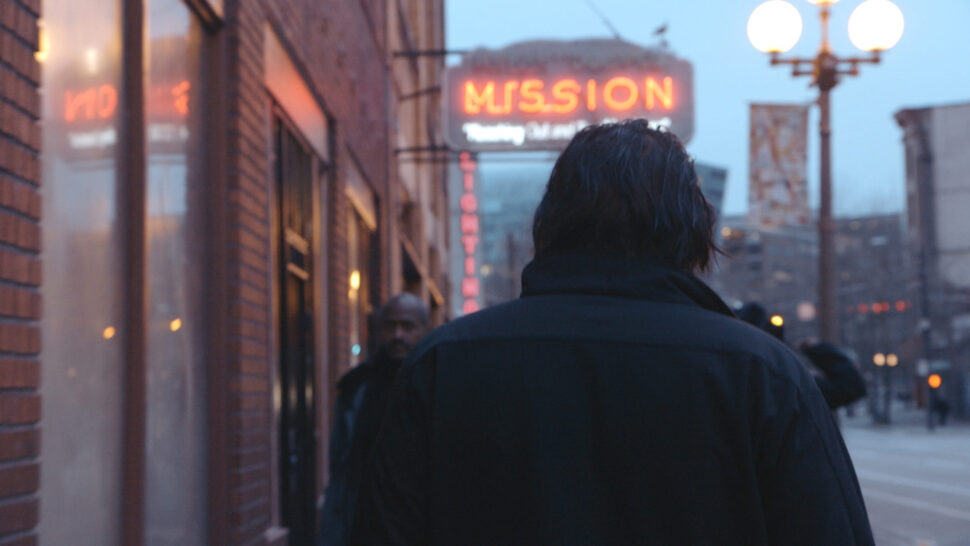
A New High – An Interview with Producer Eamon Downey
Recovery Beyond Featured In

In A NEW HIGH, a diverse group of men and women come together to climb out of homelessness and drug addiction through an unorthodox recovery program that uses mountain climbing as a means of rehabilitation. After one year of intense physical and mental conditioning, the team attempts to summit one of the most dangerous mountains in the country, Mt. Rainier.
Producer Eamon Downey spoke to me earlier this week about the making of the film:
JS: How did you become of aware of Mike Johnson and this rather unique rehabilitation program at the Union Gospel Mission in Seattle?
ED: Our film’s Executive Producer/Producer Philip Erdoes had heard of a similar program in Washington around a decade ago. Given the unique approach of this recovery program and it’s tremendous success in helping addicts overcome their addiction, our team reached out to the program in 2012. After a little digging, we found Mike Johnson leading his own climbing out of homelessness and addiction program at Seattle’s Union Gospel Mission. Our production crew flew out to visit the team and himself to see if there was a film there. It was probably within five minutes of meeting Mike and the team that we decided it was imperative we move to Seattle immediately to spend a year documenting this transformative story.
JS: How did you approach them about making your documentary?
ED: Approaching anyone to be featured in a documentary is a delicate subject especially when we’re looking to follow them as they recover from the darkest periods of their lives. However, being in the depths of recovery, the team members felt it was equally important to share this story of perseverance, if for nothing else so that it may inspire other addicts to seek treatment.
JS: Was there any hesitation from any of the participants featured in the film in taking part?
ED: Initially upon hearing that some filmmakers from New York City want to follow their lives in recovery for a year, there may have been a bit of hesitation that was quickly alleviated once we met with the team members. It was clear that we wanted to share this story for the same reason they agreed to participate: to share their journey and instill hope in others struggling to summit their own personal demons. Once we established we were all on the same page, all the participants were eager to be part of this film.
JS: How tough was the climb up Mt. Rainier for you as filmmakers – physically climbing and capturing it on film?
ED: Climbing a mountain is a challenge. Climbing a mountain with the extra weight of film equipment in addition to your climb gear is extremely difficult. Running up and down along rope lines to capture each character as they make their way to the summit is almost beyond comprehension, but Samuel and Stephen did tremendous work filming the climb as you’ll see on screen. They trained alongside the recovery climbers throughout the year, but between the extra pounds on their backs and filmmaking duties it’s almost as though they had summited the mountain twice during the climb, but without a single complaint. The importance to do justice to the story was their fuel.
JS: It’s a very inspiring story that unfolds as we root on the participants, both with the climb and in putting their lives back together – can you talk about how it was for you as filmmakers witnessing both the triumphs and pitfalls?
ED: Spending a year in such an intimate setting with the recovery climbers really transformed them from documentary subjects to friends whose recovery we personally cared about succeeding. Being an objective documentarian is such a difficult balance and of course we were proud of their personal triumphs and saddened when some recovery climbers hit roadblocks in their path. The real lesson learned here isn’t if you summit you win or if you stumble you fail; it’s your perseverance to stay sober or to keep coming back for treatment that defines your recovery. It’s just as inspirational witnessing a full recovery as it is seeing someone that stumbled get back up and keep trying.
A NEW HIGH screens on at 8:30pm on Friday, March 4 at the Peabody Essex Museum http://salemfilmfest.com/2016/films/new-high/
-
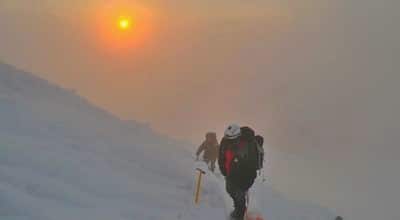
The Climb Out of Homelessness
Recovery Beyond Featured In

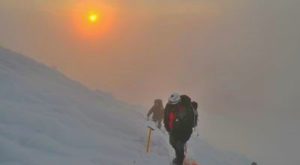
We could barely see each other from 30 feet away, but the entire group of fifteen couldn’t have been more thankful. We were finally sheltered, however partially, from the cutting wind and the cloud moisture that would freeze to our eyelashes or exposed hair or just about anything fibrous. It was 7:22 am and we were standing in the summit crater of Mt. Rainier.
Eighteen members of our team left the comparative comfort of Camp Muir at one o’clock that morning. We had already stuck it out through some severe lighting storms that had almost completely shut down climbing operations. Only a handful of climbers went up the mountain the night before, and they left late– much later than normal.
Two of our climbers opted to stay behind at Muir, tucked onto the backside of a ridge at 10,080 feet. One worried about the danger, the other was ill. Our team brought along a spare volunteer guide, and he brought along a spare rope, in case we needed to “spin” climbers along the way. At 11,100 feet that guide, Bo Valencia would pull out that spare rope, tie together two more retreating team members, and lead them back to Muir.
 It was not a classic climb, and these were not classic climbers. Most were members of the residential addiction recovery programs of Seattle’s Union Gospel Mission (UGM). That’s right: recovering homeless addicts, who were completely apart at the seams this time last year. Now, they were climbing one of the highest mountains in the lower 48, and under pretty challenging conditions.
It was not a classic climb, and these were not classic climbers. Most were members of the residential addiction recovery programs of Seattle’s Union Gospel Mission (UGM). That’s right: recovering homeless addicts, who were completely apart at the seams this time last year. Now, they were climbing one of the highest mountains in the lower 48, and under pretty challenging conditions.Just like with mountains, climbing out of homelessness and addiction requires a team.
They would have to cross a deep crevasse over a ladder-bridge, fight serious winds and cold, low visibility, thin air and exposure to fall hazzards and falling rocks. But that’s the easy stuff compared to overcoming heroin, crack, alcohol and meth addiction severe enough to have taken everything from them. Families, jobs, children, and homes can be all consumed into the yawning ravenous mouth of brokenness.
Just like with mountains, climbing out of homelessness and addiction requires a team. You need guides, and tools you don’t have– tools you don’t yet know how to use. Sometimes people slip and trip. Sometimes they get exhausted and quit, descending to the lowlands. Most of the time it’s hard to see the goal of the summit, and you have to trust the guides that if you keep climbing it will come. They know; they’ve been there.
 At Seattle’s UGM, we had multiple goals behind the crazy idea to help our recovery clients become climbers. First, we wanted the men and women themselves to know that they are not defunct or defective. Challenged: yes. Defeated: no. Second, we wanted to find a way for the community to enroll in their journey of healing and recovery.
At Seattle’s UGM, we had multiple goals behind the crazy idea to help our recovery clients become climbers. First, we wanted the men and women themselves to know that they are not defunct or defective. Challenged: yes. Defeated: no. Second, we wanted to find a way for the community to enroll in their journey of healing and recovery.Most people see homeless persons and don’t know what to think. Why don’t they get help or get a job? Are there no jobs? Are they just junkies and alcoholics? If I give that panhandler money (I never do, by the way), will it just go to drugs or beer, and is that something I should worry about? Most people have no idea that their most important gift would actually be themselves.
When I told my team at UGM what I wanted to do, a colleague told me about Mark Ursino. Mark is a climber, and never dreamed that his personal hobby could help change someone’s life. So thought the other volunteer guides, like pro guide Eben Reckord of International Mountain Guides, Inc. or the myriad other supporters. Our climbs enable up to three-dozen people or more to come around these “recovery climbers” and, along the way, hear their stories. At some point, the addicts and the volunteers realize they have actually become part of each other’s stories.
Everyone who climbs knows that it’s not really about the mountain.
It’s about being on the mountain with people you trust.Addiction and homelessness trap people into a self-defeating perception of one’s self, and a self-reinforcing social circle of dysfunction. Becoming real friends with “normal” people while doing amazing things with them– sober– serves to break down so many of the walls that have kept these gifted neighbors in their prisons.
 Everyone who climbs knows that it’s not really about the mountain. It’s about being on the mountain with people you trust. Helping the abused, abandoned, traumatized and betrayed learn how to trust again requires a partner. It requires a rope. It requires a mountain to climb together, entrusted to one another in the face of some danger. So, what I love the most is seeing people from the community and people from the streets becoming one team that changes everyone on it. The summit, if we make it, is icing on that cake.
Everyone who climbs knows that it’s not really about the mountain. It’s about being on the mountain with people you trust. Helping the abused, abandoned, traumatized and betrayed learn how to trust again requires a partner. It requires a rope. It requires a mountain to climb together, entrusted to one another in the face of some danger. So, what I love the most is seeing people from the community and people from the streets becoming one team that changes everyone on it. The summit, if we make it, is icing on that cake.You can help. Contact your local rescue mission. Ask to speak to a program supervisor, and invite some recovering homeless people along with you in what you would already be doing. It doesn’t really matter if your hobby is climbing or cycling, canoeing or sailing, flying model aircraft or the full-size kind. Just share it. Teach it to someone who didn’t have that chance, who wasn’t invested in. That investment will change you both.
What I love the most is seeing people from the community and people from the streets becoming one team that changes everyone on it.

My climbers are now graduated from UGM’s recovery program, working jobs and internships. Some of them have reconnected with families. Others are still navigating that. Each has a new mountain to climb, the next challenge. We continue to talk, because they’re my friends. Some have slipped and tripped– I’d be lying if I said this all worked like magic.
But even for those who have fallen, they’re learning how to stop the fall, get back up and start climbing again. And I got to be a part of that.
I’m a blessed man.







THE OUTDOORS IS JUST OUT YOUR DOOR – AND THE HOMELESS ARE TOO
– A note from Publisher Brad Bloom
Seattle’s Union Gospel Mission is a member of the 100-year old Association of Gospel Rescue Mission (AGRM). The association represents 300 members in North America. There is likely one or more missions near you. Gospel rescue missions have a long history of providing lifelines for those drowning in the waves of adversity and the undertow of addiction. Gospel is part of their name because their leaders are compelled foremost by Jesus’ instructions to actively care for those in need, and to introduce them to the liberating good news of His kingdom and all it represents. Their name includes rescue because delivering those in need from danger is the critical and consuming first part of a sometimes slow but always exciting journey that leads to new desires, choices, and direction in life. The word missions is in their name because those in need see each of their structures as a bastion of protection and a refuge from fatigue and failure, similar in concept to those Southwestern sanctuaries built by pioneering padres long ago.
The exciting story of Mike Johnson and team with men resident at Seattle’s Union Gospel Mission has been documented in the compelling film New Heights, which was nominated for the 2015 Sundance Film Festival. Johnson shares the adventure with you here in Shout! Outdoor Lifestyle Magazine. But, this story offers much more than adventure. It is in invitation to add an extra challenge to your outdoor passions and experience life with those who are homeless. Certainly there are opportunities to climb Rainier with Mike Johnson and men. There are also opportunities to bike with the Denver Rescue Mission or run a race with Wheeler Mission Ministries’ in Indianapolis or perhaps whatever you like to do outdoors to support the ministry of one of 300 rescue gospel missions throughout North America. Find one near you, pray, contact them and then Be Life to others by taking your outdoor to new heights.
-
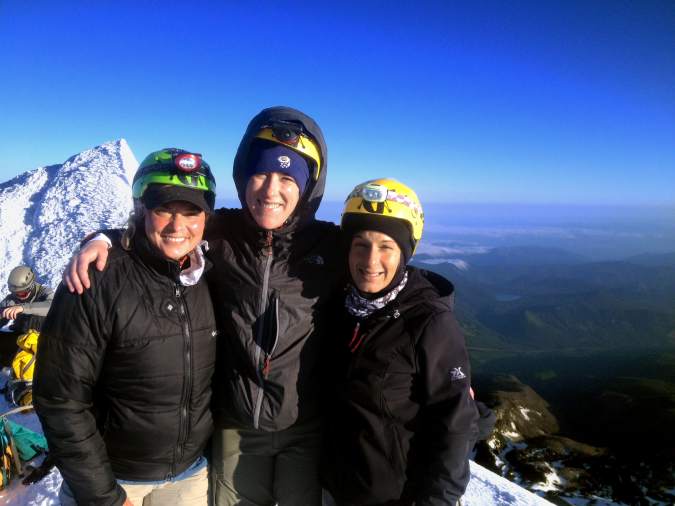
Climbing Out of Homelessness With Seattle’s Union Gospel Mission
Recovery Beyond Featured In

If you appreciate metaphors, they’re everywhere in the Union Gospel Mission’s annual Mount Rainier climb. Now in its fourth year, the program takes 16 homeless men enrolled in UGM’s addiction-recovery program to Rainier’s summit. And from August 7 to 10, former Army Ranger Mike Johnson, who as UGM’s director of special projects spearheaded the program, will aim to get four more to the top—along with, for the first time in the program’s brief history, two climbers from UGM’s addiction-recovery program for women.
“Immediately, the metaphor was really powerful, like climbing out of homelessness is like climbing Mount Rainier. It’s hard. It takes a team. You need a guide. You have to get stronger than you’ve been,” Johnson says of his inspiration to get people from society’s depths up a 14,000-foot mountain. He remembers a 2010 day trip to Sunrise at which one of the men from the recovery program pointed toward the top and said, “I wish we could go up there.”
“We have to start pretty gently. We have a lot of guys who haven’t been good to themselves.”
Everything clicked, Johnson recalls, and with the help of sponsor Whittaker Mountaineering, UGM donors, and a handful of volunteer guides, an ascent of Mount Rainier has been an August tradition. Johnson starts training would-be climbers in October, welcoming anyone enrolled in the UGM 12-month recovery program. This year he started with about a dozen—a list that slowly shrank as time passed and training intensified.
“We have to start pretty gently. We have a lot of guys who haven’t been good to themselves,” Johnson says. “A couple guys usually fall off the team for relapse reasons. . . . It’s self-selecting. The group has always whittled itself down into a size I can work with.” By May, the climbers are ready for one final tall test before Rainier: “If you can’t climb Mount Hood, then you’re not going to climb Rainier. It’s just reality,” says Johnson, comparing the Oregon peak to “the sorting hat from Harry Potter.” This year he says five climbers got left on the side of the mountain. “We need people who are physically prepared,” he says simply.
Hood, of course, is just the warm-up. About 10,000 people attempt to summit Mount Rainier every year, but half fail, according to statistics from the National Park. But to hear Johnson tell it, the four days this week that UGM’s six remaining recovery-program climbers will spend tackling the most prominent mountain in the lower 48 won’t be so much a challenge as a celebration of something far bigger. In so many ways, these climbers have already made it.
“What I loved about [the idea] was that it felt like it had a lot of handles—ways for people to get a hold of what our folks [at UGM] are going through. Because I was worried, and still am, that homeless folks have a way of becoming urban wallpaper,” Johnson explains, sitting in a room a floor above UGM’s Pioneer Square men’s shelter, sweaty and not long removed from an afternoon training session with this year’s climbers. “It’s not that if you can climb Rainier, then you can climb out of homelessness. It’s if you can climb out of homelessness and addiction, then you can climb Rainier. This is the hard one.”
Sitting across from Johnson, 35-year-old Kristy Olmstead, one of this year’s two female climbers, speaks confidently, determined to join the list of UGM successes who have topped Rainier. Like the other five recovery-program climbers, Olmstead’s story is one of addiction, despair, and—now, she assures us—redemption. Olmstead says she spent a year in prison in Idaho on theft charges before coming home to Washington last year and finding her way into the UGM recovery program and onto the climbing team. “I liked it all,” Olmstead says of her history of addiction.
“One thing I learned is that if I put one foot in front of the other, I was going to get there.”
Primarily, though, she admits, methamphetamine was her drug of choice. And it was meth—more specifically, an unresolved charge of possession with intent to deliver hanging over her head in Snohomish County—that put Olmstead back in prison earlier this year for three months, even though she was enrolled in UGM’s recovery program and climb training. While others might have caved, Olmstead says the mountain was an inspiration.
She remembers improvising workouts in the prison yard to keep her training on track: banging out pushups and running in a circle, because in prison you can’t run in a straight line for long. “I was offered drugs when I was in there, and I said no, and they asked why, and I said I have a bigger plan,” Olmstead recalls.
The weekend after her release from prison, the UGM climbers took Mount Hood. And remarkably, Olmstead was right there with them. “I was just so proud of her,” Johnson says, admitting that he figured there was no way Olmstead would be prepared to climb after three months in lockup. Of this week’s Rainier trek, Johnson is far more certain. He says he knows Olmstead is ready.
“When I summited Hood I was just bawling and laughing and crying and praying. And I was just so happy, because I knew if I summited Hood, then I could still do Rainier,” she recalls.
“One thing I learned is that if I put one foot in front of the other, I was going to get there,” Olmstead says of her climbing mindset. “I wasn’t going to worry about 10 steps away. I wasn’t going to worry about how steep it looked. I just knew that if I put one foot in front of the other, that eventually I would end up at the top.”
It’s a metaphor we could all learn from.
In The News
Recovery Beyond > In The News


